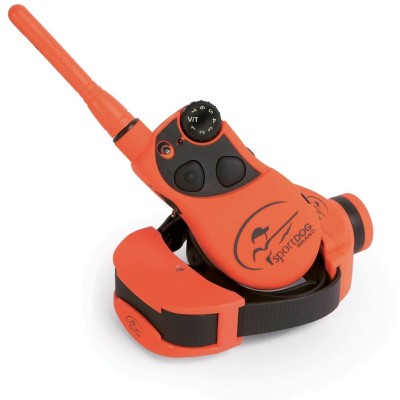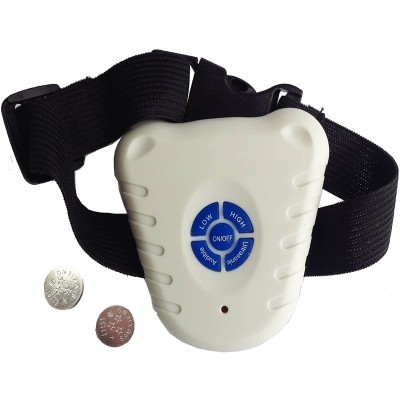Should You Use a Shock Collar?
13.02.2021.
Every product and service on World Dog Finder is independently selected by our editors, contributors, and experts. If you purchase something through our links, we may earn a referral fee. Learn more
Deciding for shock collar training or correcting should be done only when you have already reached your positive reinforcement training limits. Shock collars are not meant to hurt your dog; they are meant for correcting unwanted behavior like excessive barking or aggressiveness.
If you decided to go for this method, here are our top choices.

Petrainer 998DRB has 100 levels of shock and a fully customizable remote. There are different options like clicks, vibrations, and static shocks you can choose and adapt as your dog’s training progresses.
- different options
- warning vibration and click
- waterproof
- good value for money
- shocks your dog

If you are a hunter and looking for professional training collars for your dog, then SportDOG UplandHunter 1875 is the choice for you. It has a vast range and a battery life that lasts from 40 - 60 hours, depending on usage.
- long battery life
- huge range
- cool design
- one remote for up to three collars
- high price

Some owners are not too keen on shocking their dog with static electricity, and we would be one of those. However, getting dogs to stop their excessive barking could present a problem, and that is when Pet Life Non-Shock Safe Anti-Bark Dog Collar comes in handy. It is based on ultrasonic frequency and vibrations and not on static shock.
- no static shock
- cheap
- good for curbing excessive barking
- effectiveness
- relatively new and untested
What is a shock collar?
A shock collar is a dog collar used for training since the early 1960s. It is a mechanism whose goal is to give your dog a shock every time they do something they are not supposed to. Some owners and groups argue that using a shock collar is inhumane, but there is no denying their effectiveness. Many dog trainers prefer using them for training overly aggressive dogs and dogs that won’t stop barking.
If your dog barks excessively and your neighbors are unhappy about it, you might be forced to give your dog up. If you consider the alternative, using a shock collar might not seem so inhumane. Excessive barking can be pretty annoying to dog owners and their immediate surroundings, so teaching them not to bark might be a good thing to do.
There are different ways to battle excessive barking, and using a shock collar should be done as a last resort. If you have a dog that is an enthusiastic barker, check out this article that can help you in a more humane way: How To Stop A Dog From Barking?
How does a shock collar work?
The goal of using a shock collar is to shift the dog’s focus from doing something terrible or dangerous. Ideally, shock collars should never be used as punishment. Instead, they should only be used as prevention. Let’s say a dog starts to bark or chase a cyclist; the mild shock should use as a warning that they are doing something they shouldn’t. This type of training is called negative reinforcement. The more humane training method is called positive reinforcement.
Positive reinforcement training
This training method is based on endorsing your dog’s good behavior. The best way you can do that is by giving them a treat every time they do something you tell them to do. This method involves a lot of praise and yummy doggy treats.
Negative reinforcement training
Negative reinforcement training is a method based on correcting a dog’s negative behavior. The correcting can be done with a shock or a pronged collar, whose goal is to shift the dog’s focus from negative behavior. After abandoning the unwanted behavior, the dog is rewarded with a treat.
Is it safe to use?
The shortest possible answer would be - yes. Shock collars are safe to use in the sense that they will not cause your dog any long-lasting physical harm or damage. Psychological effects are harder to measure. A dog might be scared of getting shocked, and perhaps that has an impact that is more damaging than what we can observe at the moment.
Pros and cons
Like most products, shock collars have their pros and cons. Here are six main things you should know about shock collars before deciding to use one on your dog.
Cheap training method
A shock collar is a cheap training tool. Some of the products we mentioned can be found for under $30. It is a lot cheaper than getting an expensive fence or a professional trainer to work with your dog.
Quick results
Some owners reported that their dog adjusted its behavior after a few shocks. The shock usually comes after the warning vibrations, which were enough to make the dog abandon the unwanted behavior. Plus, the best thing is that you don’t have to be close to your dog to enforce good behavior. There are shock collars that sense vibrations and can shock your dog if they start barking excessively.
Adjustable
The shock collar usually has several features available, and they can be adjusted based on what your dog needs. They can also be adjusted based on the training progress, and eventually, the shock can be turned off permanently. The intensity of the shock can be adjusted as well.
These might be considered benefits chock collars bring to the table and dog training. Here are some negative sides to this product.
Static shock
No matter how you spin or describe shock collars, the fact remains that you are still using an electrical charge to shock your dog and correct their behavior. Yes, shock collars are useful, but is the price really worth it? It would be up to each owner individually to make their minds about this product.
Lacking rewards
Problematic behavior could be corrected using negative training methods, but the result is not an obedient, loving dog. The result is a working breed that is not an ideal family dog. Nothing can replace the positive reinforcement and reward your dog receives from you after completing a task. Make sure you include treats, praises, and plenty of cuddles.
Unnecessary shocking
If you are trying to correct a behavior like extensive barking and decide to leave the collar on your dog the whole day, the shock collar might start shocking your dog even when it doesn’t need to be shocked. Over-correction can happen, and your dog will end up confused about what sort of behavior is expected.
World Dog Finder team








Share